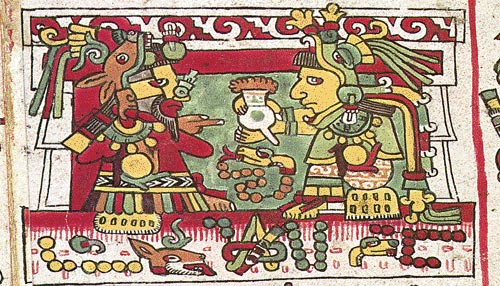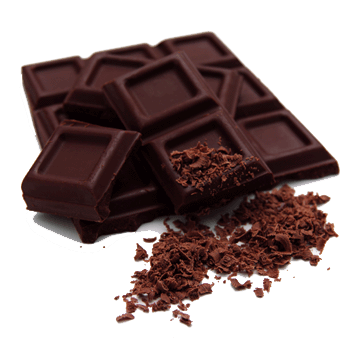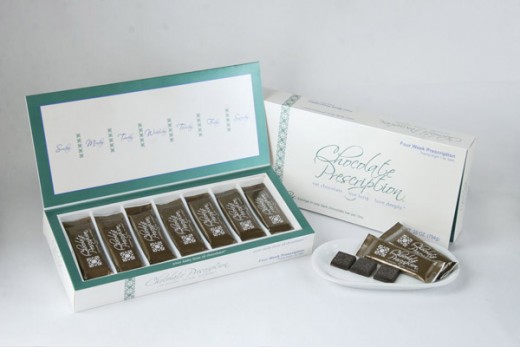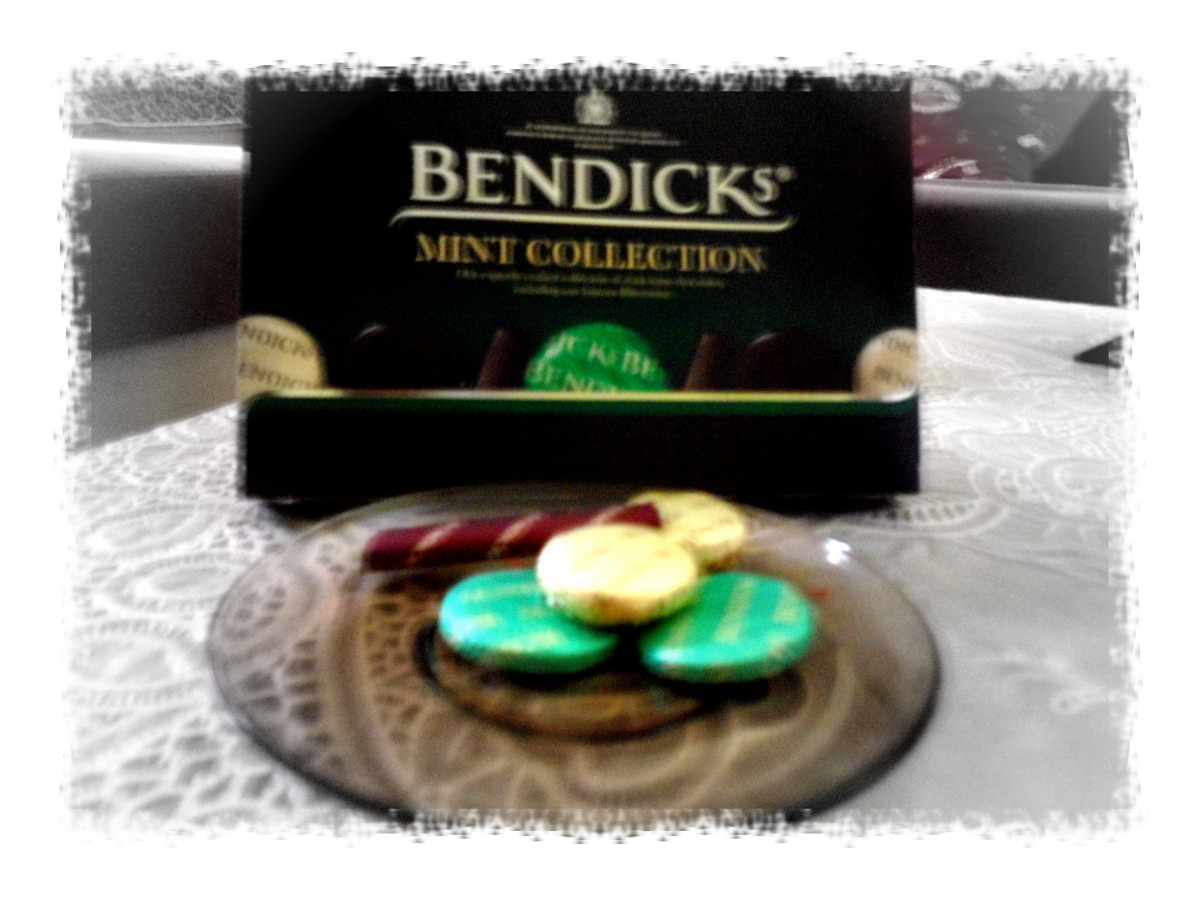Health Benefits of Chocolate Unique to Dark Chocolate
One of the biggest challenges people have with any diet is the denial of their sweet tooth. This denial can continue until a person’s will is broken and they have to cheat. They have to indulge the craving. This often leads to overindulgence and a lack of motivation to continue the diet. The culprit in all of this is often sweets. Who can resist the call of a sugary and sweet delight after living in a prison of bland diet food?
Researchers, however, may have found a light at the end of the tunnel and a momentary escape from the dreariness of health food. Recent studies have found several health benefits of chocolate. Maybe there truly is such a thing as healthy chocolate.

Chocolate has been around for centuries, and has seen a variety of uses. In its earliest use, at around 1100 B.C., the pulp of the cacao plant was ground up and used to sweeten a fermented beverage. As centuries passed, chocolate grew in popularity throughout Mesoamerica. The Mayans and the Aztecs viewed cacao beans as a delicacy. The Mayans, who saw cacao as a gift from the gods, used cacao extensively in religious ceremonies. Later, the Aztecs used cacao beans as a currency. Payment of taxes was done using cacao and a system of exchange was developed based on the delicacy.
When the Spanish arrived in the New World, they often found the natives greeting them with gifts of cacao beans. Taking the beans back to Europe with them, cacao soon became a favorite delicacy of the nobles. With the rise of modern manufacturing techniques due to the Industrial Revolution, chocolate was more easily produced and its popularity grew worldwide.Throughout history, chocolate has been viewed as having health benefits. The Aztecs thought that cacao was useful as an aphrodisiac as well as in fighting fatigue. In fact, it was given to warriors before battle. Later, in Europe, the Catholic Church allowed for chocolate to be consumed during Lent as it was thought to have nutritional value.
So is there truly such a thing as “healthy chocolate?” Recent studies have shown that chocolate has a wide variety of benefits. Research has shown that chocolate is helpful in reducing the risk of both heart disease and diabetes. It can reduce the amount of LDL cholesterol and is a good source of antioxidants. In fact, chocolate has also been shown to be a cough suppressant.

Dr. Nolan Hollenberg and the Kuna Indians
- Dr. Nolan Hollenberg- Boston Globe
Summary article from the Boston Globe with the details of Dr. Nolan Hollenberg's work with the Kuna Indian tribe
Dr Nolan Hollenberg, of Harvard Medical School, conducted a study on hereditary genes in order to discover a gene that protected against heart disease. His research led him to the Kuna Indian tribe of the San Blas Islands, off the coast of Panama.
In San Blas, Dr. Hollenberg found that the Kuna had extremely low mortality rates due to heart disease and diabetes. He also found that heart disease rates increased among Kuna natives who left the San Blas Islands for the mainland, meaning there was no protective gene in the Kuna. Further research gave Dr. Hollenberg the reason for the increased cardiovascular health in the Kuna tribe. He found that a main staple of the Kuna diet was an average of 5 cups of homegrown cacao a day. This homegrown cacao was shown to be a good antioxidant as it contained a high amount of flavanol, which would have been removed if the cacao had been processed. While Dr. Hollenberg has yet to definitively prove that cacao is the answer to the lower death rates due to heart disease, his work has certainly provided a starting point for others.Tufts University and University of L'Aquila Study
- Research of Tufts University and University of L'Aquila | Mail Online
Summary of the research conducted by Tufts and L'Aquila on the health benefits of cacao.
Inspired by the health of the Kuna tribe, researchers from the University of L’Aquila in Italy and Tufts University in Boston gathered seventeen people showing high blood pressure and early signs of type 2 Diabetes. The researchers conducted a study that was done in two phases. In the first phase, half of the subjects were given 6 grams of dark chocolate per day for a period of 2 weeks, while the other half were given the same amount of white chocolate. In the second phase, the roles were reversed with the first group being given white chocolate and the second given the dark chocolate.
The results showed that in both groups, the white chocolate had no effect on high blood pressure, while dark chocolate significantly reduced the blood pressure of both groups. In addition, it was found that the level of insulin resistance in both groups was lowered with dark chocolate, meaning the subject’s bodies were able to better use the insulin in their bloodstreams. The results of these studies, as well as another one conducted under the leadership of Dr. Dirk Taubert at the University of Cologne, suggest that dark chocolate does lower blood pressure and decrease the risk of heart disease.
The prevention of heart disease and the presence of flavonoids are not the only health benefit of chocolate. A study conducted at the National Heart and Lung Institute in London showed that 1000 mg of theobromine, which is an ingredient in chocolate, was 33 percent more effective than codeine in preventing coughs. Considering that a one-ounce bar of dark chocolate has 450 mg of theobromine, the study showed that dark chocolate could be an effective cough suppressant.
In another study, researchers at the Children’s Hospital Oakland Research Institute found that the flavonoids in cacao were useful in treating the CFTR proteins, which control fluid secretion into the intestines. If the intestines secrete too much fluid, diarrhea can be the result.With all of this research showing the health benefits of chocolate, some may want to indulge their sweet tooth a little more, but before people go running to the store to load up on Hershey bars there are a few things to be considered. The aforementioned studies showed that only dark chocolate has real health benefits. Milk chocolate has too many additives, such as milk and high amounts of sugar, which negate the health benefits of chocolate. Also, in several of the studies, white chocolate was shown to have no effect either.
So only dark chocolate can be considered a healthy chocolate, and only in certain amounts, roughly one to two ounces. The problem is that people find it hard to exercise portion control when it comes to chocolate bars. Most bars are 2-3.5 ounces in size. It is difficult to eat only an ounce of chocolate and leave the bar unwrapped, meaning people will go throughout the day mindlessly munching on the bar. Before they realize it, that one-ounce of chocolate has become three ounces. How much of a chocolate bar does one eat to consume only one ounce? How is one supposed to regulate their chocolate intake?

Chocolate Prescription Website
- Healthy Dark Chocolate
Website for Terry Traveland's company, Chocolate Prescription.
Terry Traveland has discovered one possibility. Traveland lost 28 pounds, which she attributed in part to supplementing her diet with a one-ounce serving of dark chocolate every day as a reward for adhering to her diet for the rest of the day. Traveland had started her own chocolate company, Chocolate Prescription, which offers one-ounce servings of dark chocolate in 1 and 4 week “prescriptions.” The bars come in specially designed boxes with the days of the week listed on the inside of the lid to correspond with the bars. After she started the company, Traveland made a New Year’s resolution to “follow my own advice, by eating one ounce of dark chocolate a day.” Traveland found that she began to lose her interest in sweets as the dark chocolate satisfied her sweet tooth. She was no longer mindlessly reaching into the candy jar, or eating other sweets that are higher in fat and calories.
“I no longer even wanted the birthday cake at the office,” says Traveland. “And, it wasn’t that I was depriving myself. It’s just that I really didn’t want the cake. I was satisfied with the chocolate.”

One of the main factors that determines the health benefits of dark chocolate is the percentage of cacao in a chocolate bar. Dr. Mehmet Oz, who regularly featured on The Oprah Winfrey Show, wrote in his book You, The Owner’s Manual, that it is advisable to eat an ounce of 70% or more dark chocolate a day to improve heart health.
“I found,” says Traveland, “that the two main factors in a healthy chocolate are the right ingredients and the right packaging. Studies have shown that a chocolate bar needs to contain at least 70% cacao to get the health benefits.”
According to Traveland, many users of her product say that a small piece of chocolate each day helps cut down on their desire to eat sweets and even reduces the “mindless munching” that can sometimes occur in a moment of weakness when one deprives themselves of something they enjoy.
“It’s like eating a bag of M&M’s. You open the bag to eat a few and before you know it half of the bag is gone. With Chocolate Prescription it’s easy to ensure that you don’t eat more than a moderate amount every day. You simply eat one Chocolate Prescription bar each day. You can easily keep track of that because the days of the week are listed on the box lid to correspond to the bars in the box.”
Given the recent discoveries that strongly suggest the health benefits of chocolate in specific portions, and the history of chocolate as a component of many health therapies, dieters and health food enthusiasts now have a way to reward themselves after a bleak day of health food. Chocolate lovers everywhere can easily live a healthy lifestyle and enjoy one of life’s little perks as well by having their daily serving and feeling good about the health benefits chocolate can provide.
- WebMD
Dark chocolate has ingredients that lower blood pressure and fight disease, but white chocolate and milk chocolate don't, studies show. - Wikipedia, the free encyclopedia
Information on chocolate from Wikipedia. Contains some health information. - The Chocolate Review
History of chocolate usage. Covers Mesoamerican usage of cacao as well as the spread of chocolate throughout western Europe. - Children WebMD
Information from WebMD's children's site on the effectiveness of dark chocolate as a cough suppressant. - University of Pennsylvania Museum
Information on the usage of cacao throughout history.








